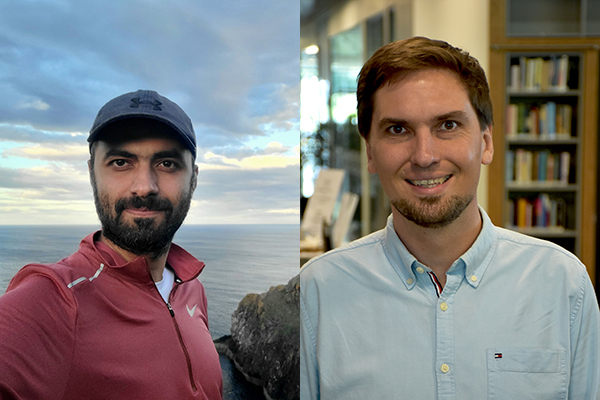Aramesh was awarded € 2 million for his research, in which he applies a new approach combining nanopore technologies with atomic force microscopy (AFM) to studying protein production and secretion from individual cells. The method makes it possible to examine how immune cells interact with cancer cells in their natural environment.
“The grant provides resources to pursue my deepest thoughts, enabling me to pursue my research questions with depth and efficiency. It allows me to assemble a capable research team, expand collaboration opportunities and elevate the potential impact of my research,” says Aramesh.
In addition to employing a doctoral student, some of the money will be spent on the specialist equipment and tools required for experimental work.
Large arrays of radio antennae
Glaser was awarded € 1.7 million to develop the next generation of detectors for radio neutrino observatories, large arrays of radio antennae installed in the Greenland and Antarctic ice sheets.
The project he has now been granted funds for will lead to a significant increase in the ability to discover ultra-high-energy neutrinos that come from outer space. These elementary subatomic particles are useful for exploring the universe’s most violent phenomena.
To develop the detectors, Glaser uses AI-based trigger systems, as well as deep learning and differential programming.
Neutrino sources in the universe
The next-generation radio detector developed for IceCube-Gen2 in the ERC project will be up to five times more sensitive to the ultra-high-energy neutrino flux, making it possible to observe neutrino sources further away in the universe. It will also provide up to three times greater accuracy in the measurement of the neutrino-nucleon cross section in exaelectron volts. IceCube-Gen2 is a powerful development of the present IceCube Neutrino Observatory in Antarctica. Construction is scheduled to commence in 2027.
“The grant gives me the opportunity to spend a great deal of time on a very interesting project that combines experimental astroparticle physics with state-of-the-art machine learning. Personally, I find it particularly exciting that this ERC project has the potential to advance the frontiers of high-energy neutrino astronomy by up to a decade,” says Glaser.
